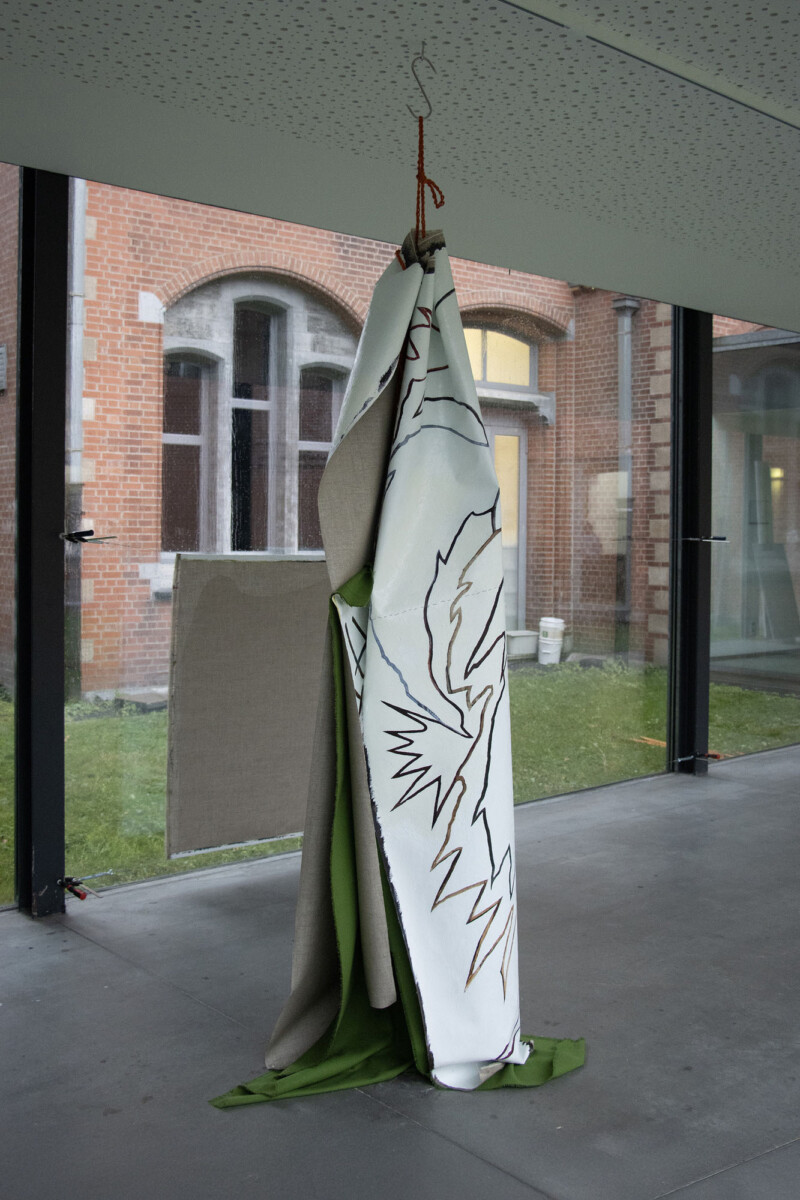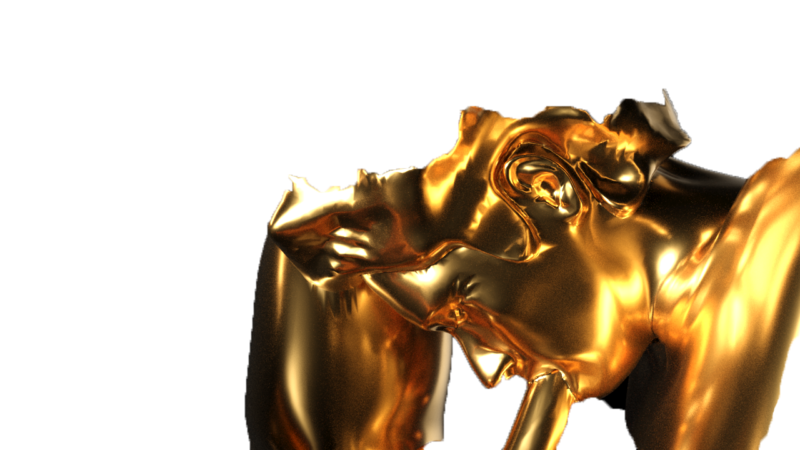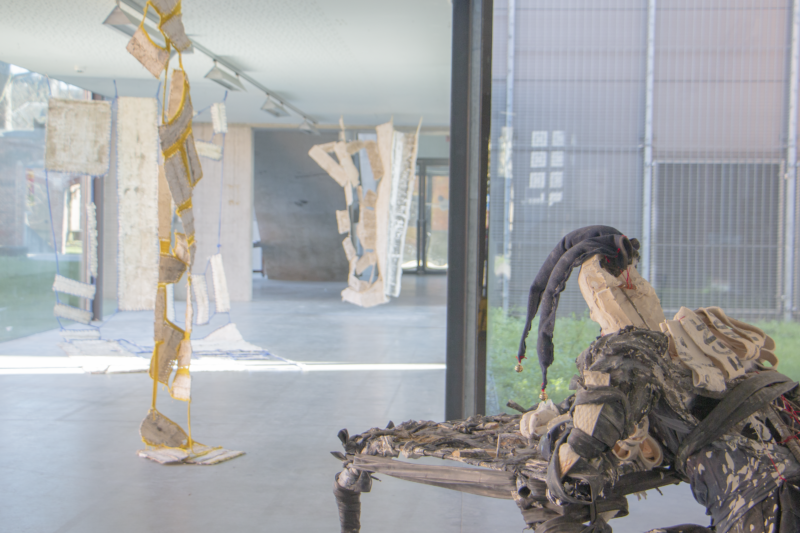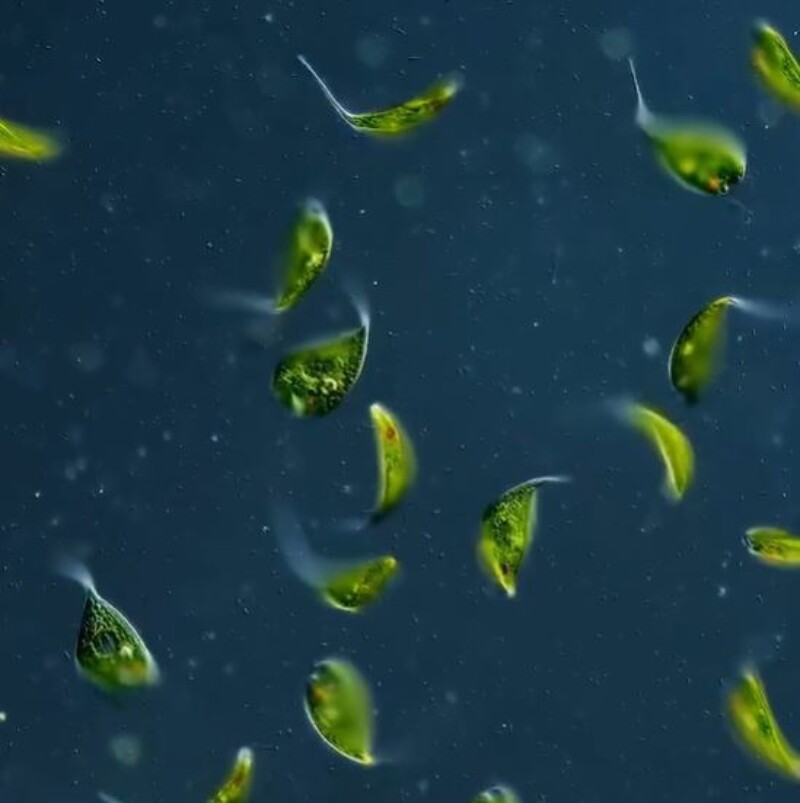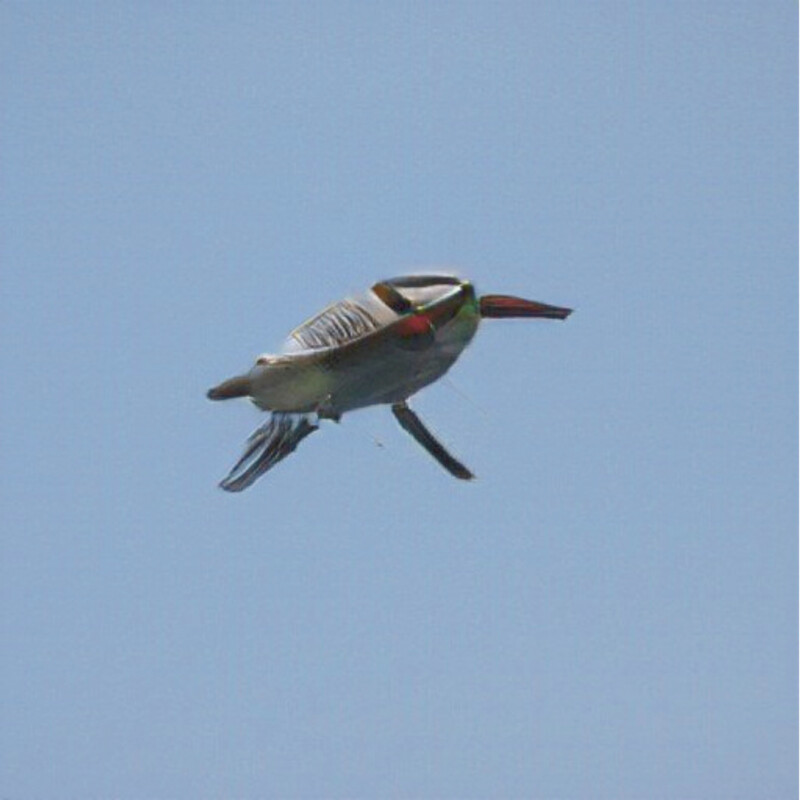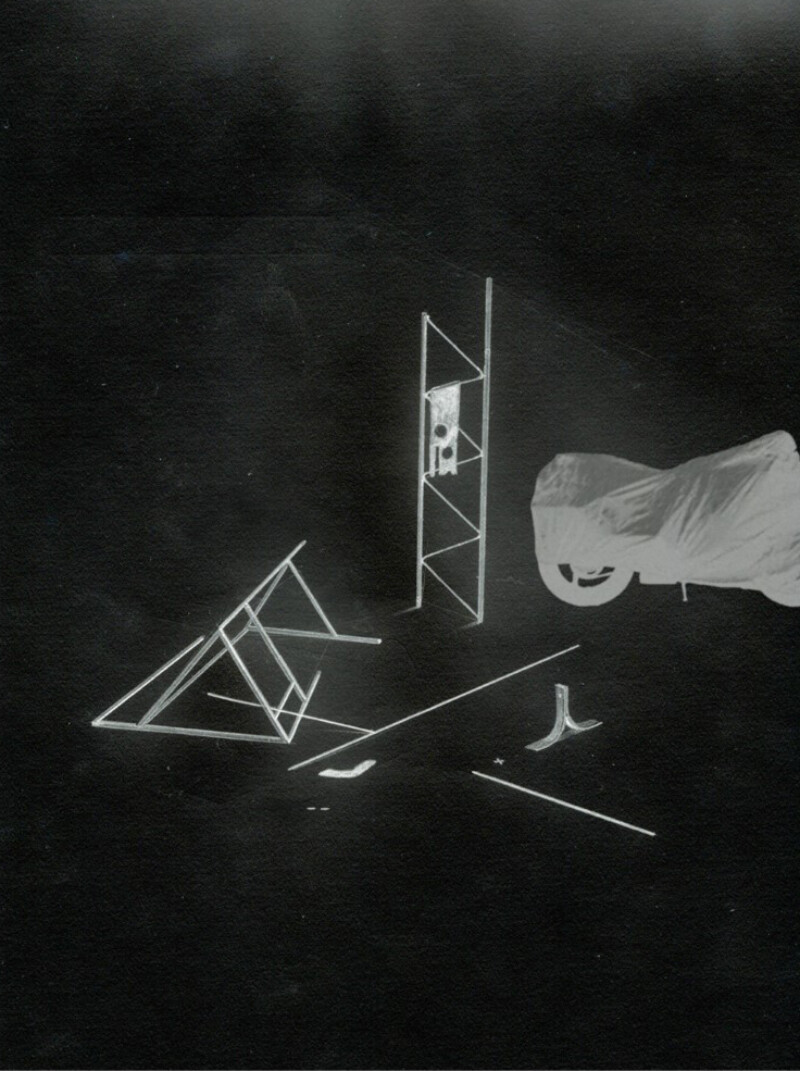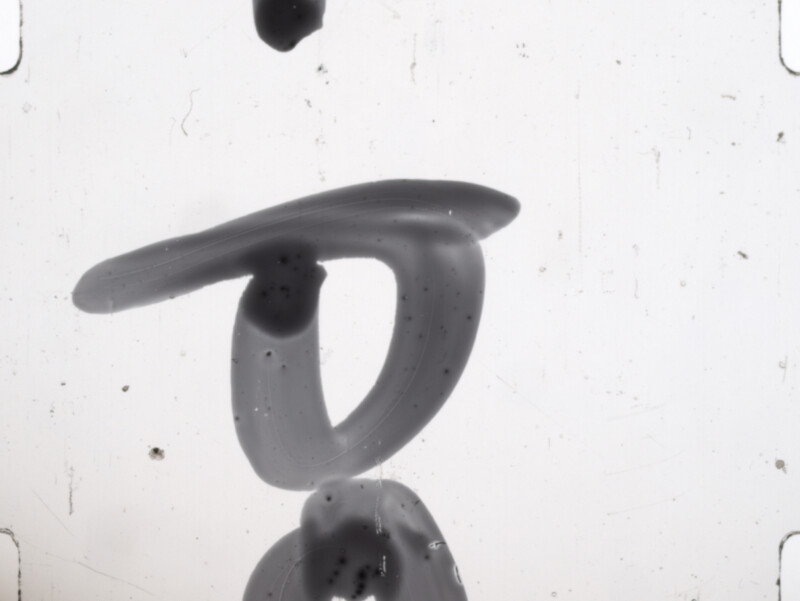
09.02.24 – 18.02.24, #155 Louis Gahide, Helle Monne Huisman, Cinematic Cascades
Helle Monne Huisman
Consider this a film...
- (35mm film, permanent marker)
What happens when we consider the window frame as the cinematic border of reality? What happens when we blur the lines between film, poetry, and wri:ng?
In ‘Consider this a film...’ a visual narrative is proposed, in which the written word shares a symbio:c relationship with the imagery it is framed by. The act of placing this composition on the window transforms the mundane into a spectacle. The dimensions of the physical and the metaphysical converge, inviting viewers to witness the magic that occurs when the textual and visual realms coalesce within a single pane.
.... a memory
- (slides from family archive, digitally recorded, cloth)
In the delicate process of preserving a memory, the artist grapples with a trove of family photographs, the tangible remnants of how her grandpa documented his wife and daughters. Now blind and entangled in dementia, he, and some of those captured in the frames, share a common journey into partial obscurity.
The time captured within these images has flowed on, leaving behind only threads of stories. Looking at her mother as a young girl, the artist ponders the elusive nature of memory transfer.
Can a photo encapsulate a narrative, or does it merely hint at the untold stories within? As she digitally records and weaves these images together, the ar:st contemplates the transformation of these familial fragments into her own memory, raising questions about the essence of storytelling and the fragile nature of preserving the past.
.... a conversation
- (16mm film, projector, permanent marker, cloth)
The interac:ve installa:on Consider this a conversation explores the intrinsic dialogue between film, genetics, and the written word. Utilizing 16mm film, a projector, permanent markers, and cloth, the physicality of film becomes a metaphor for the tangible length of genetic code and the passage of time.
As text is inscribed onto the film and played, an illegible cascade of words unfurls, forming a secret that only becomes decipherable when the projector halts. In this ongoing dialogue, poems and text fragments are wriFen on 16mm film, serving as the DNA fragments of a con:nually evolving cadaver exquis. The audience is invited to par:cipate by adding their contribu:ons on film during the opening and subsequent days, promp:ng daily re-edits and creating new mutations in the evolving conversation. The Glazen Gang serves as a symbolic transit zone, raising questions about how interactions change us and what words and images endure. .... a conversation transforms the installation space into a dynamic reflection of evolving thoughts and open secrets.
Louis Gahide
"Dualis I”
In the immersive realm of “Dualis I,” the meeting point of light, warmth, and a noise-producing mechanism transforms the conven:onal cinema. Depar:ng from the customary white screen, this installa:on boldly redefines the traditional roles of subject and object within the cinema:c space.
Two projectors cast their radiance, not in visually perceptible images, but as a fusion of warmth, light, and ambient noise. The undulating waves of white light create a transformative atmosphere, ensconscing everything in their path and giving it a new dimension. Within this luminous dance, the boundaries blur, prompting contemplation on who, in this altered space, assumes the role of observer and observed.
The artist inserts themselves into the work, positioned at the meeting point of the two projectors. Armed with a camera aimed at the intersecting beams, the artist appears to counter the assault of the projectors. Is this an attempt to redirect the subject back to its original state, or does the artist have alternative intentions? Perhaps they seek to amplify the trajectory of the projectors.
Employing film as a medium o[en carries an inherent narra:ve expecta:on yet “Dualis I” subverts this convention by stripping away any narrative. Instead, the film material is u:lised, emphasising the materiality of the 8mm projectors. Illumina:ng the darkened space, these projectors become more than mere instruments – they become sources of warmth, light, and sculptors.
The symbiotic interplay evident in “Dualis I” blurs the boundaries between subject and object. While the displacement of the familiar cinema:c context may pose a certain challenge, it is precisely this devia:on that casts a literal and metaphorical new light upon the cinema, revealing hidden facets and promp:ng a reevalua:on of our expecta:ons within this transforma:ve installa:on.
“Dualis II”
The moment in the cinema when the lights go out and complete darkness envelops you. The moment where everyone around you transforms into a mass, a yearning mass for the next logical step in this established step-by-step plan. The an:cipa:on for that first frame. That initial frame will soon transform into a cascade of images, impossible to dits:nguish due to their speed. We can soon perceive this cascade of images as a complete picture. All of this happens in less than a second. In one twenty-fourth of a second to be precise. It’s a process familiar to anyone who has been to the cinema. Yet, there’s one aspect that o[en goes unnoticed – the whitespace between the startup of the projector and that crucial first frame.
“Dualis II” presents that moment, the unsaid, meaningless white. It is the only image flowing on a projection screen without any narrative load. That beam of white light hovers like a sculpture through the black box. Yet, this electromagnetic wave conveys one message, the presence of the mechanical beast that is a projector.
vernissage 09.02.2024, 18:00
Marissal
Louis Pasteurlaan 2
9000 Gent
vr: 08:00-18:00
za-zo: 12:00-18:00
